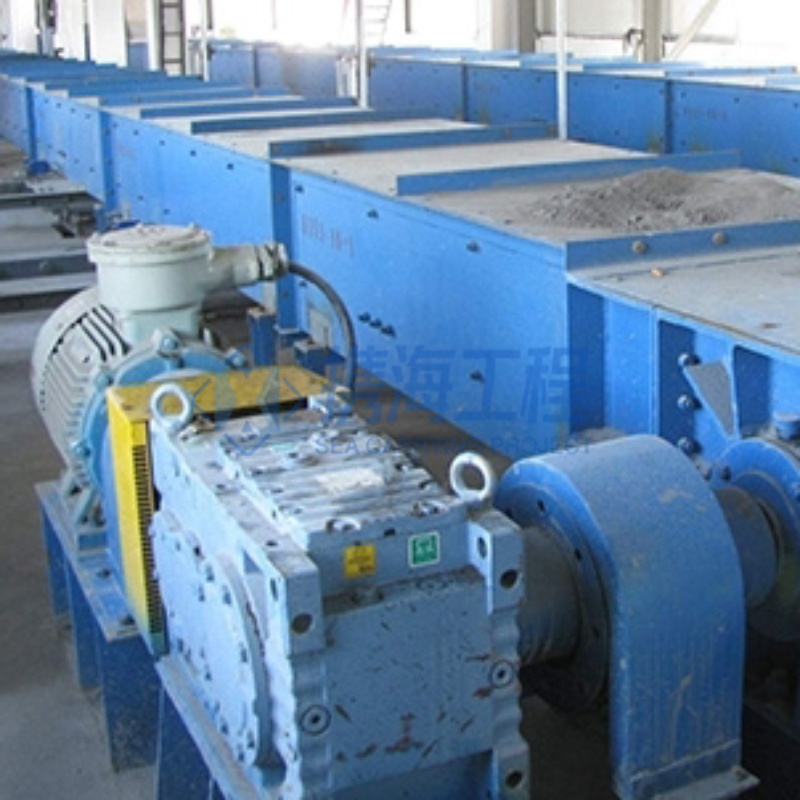The Impact of Humidifying Stirring Equipment on Product Consistency: Enhancing Quality Through Precision
Nov 11,2025
The Impact of Humidifying Stirring Equipment on Product Consistency
Introduction to Humidifying Stirring Equipment
In the manufacturing industry, achieving product consistency is paramount. One of the most significant advancements in this pursuit is the implementation of **humidifying stirring equipment**. This technology not only enhances the mixing process but also ensures that the end products

The Impact of Humidifying Stirring Equipment on Product Consistency
Introduction to Humidifying Stirring Equipment
In the manufacturing industry, achieving product consistency is paramount. One of the most significant advancements in this pursuit is the implementation of **humidifying stirring equipment**. This technology not only enhances the mixing process but also ensures that the end products meet the desired quality standards.
By integrating humidifying mechanisms within stirring equipment, manufacturers can maintain optimal moisture levels, which is crucial for various materials. This article delves into how humidifying stirring equipment impacts product consistency, outlining the benefits, technologies, and best practices for implementation.
Understanding Product Consistency in Manufacturing
Defining Product Consistency
Product consistency refers to the uniformity and reliability of products produced in a manufacturing environment. Inconsistent products can lead to customer dissatisfaction, increased waste, and diminished brand reputation. Therefore, achieving a high level of consistency is a priority for manufacturers across all industries.
The Role of Mixing in Product Consistency
Mixing is a critical process in manufacturing, particularly in industries such as food processing, pharmaceuticals, and cosmetics. Effective mixing ensures that all ingredients are evenly distributed, which is vital for achieving the desired properties in the final product. However, factors like humidity can significantly impact the mixing process and, consequently, the consistency of the product.
The Importance of Humidity Control in Mixing Processes
Why Humidity Matters
Humidity levels can affect the behavior of materials during mixing. For example, dry ingredients may clump together, while overly wet materials can lead to separation. By controlling humidity, manufacturers can mitigate these issues, leading to a more consistent product.
Benefits of Humidifying Stirring Equipment
1. **Improved Ingredient Distribution**: Humidifying stirring equipment allows for better incorporation of moisture, leading to a more homogeneous mixture.
2. **Enhanced Flowability**: Adjusting humidity levels can improve the flowability of powders and other materials, facilitating smoother mixing and processing.
3. **Reduced Dust Generation**: By introducing moisture into the mixing process, dust generation can be minimized, enhancing workplace safety and product integrity.
4. **Better Shelf Stability**: Products mixed with controlled humidity levels often exhibit better shelf stability, reducing spoilage and waste.
Types of Humidifying Stirring Equipment
Overview of Available Technologies
Various types of humidifying stirring equipment are available, each designed to meet specific manufacturing needs.
1. Humidifiers Integrated into Mixers
These devices feature built-in humidifiers that introduce moisture directly into the mixing chamber. This integration allows for precise control over humidity levels during the mixing process.
2. Standalone Humidifiers
Standalone humidifiers can be used alongside traditional stirring equipment to provide humidity control. These units are versatile and can be adjusted based on the specific requirements of the material being mixed.
3. Advanced Process Control Systems
Some manufacturers employ sophisticated process control systems that monitor and adjust humidity levels in real-time. These systems often utilize sensors and automated controls to ensure optimal mixing conditions.
Best Practices for Implementing Humidifying Stirring Equipment
Assessing Your Needs
Before investing in humidifying stirring equipment, it's essential to evaluate your specific mixing requirements. Consider the types of materials used, desired product characteristics, and production volume.
Training Personnel
Successful implementation requires proper training for personnel operating the equipment. Understanding how to monitor and adjust humidity levels is crucial for maintaining product consistency.
Regular Maintenance and Calibration
To ensure consistent performance, regular maintenance of humidifying stirring equipment is necessary. Calibration should be performed frequently to guarantee that humidity levels remain within the desired range.
Case Studies: The Effect of Humidifying Stirring Equipment on Product Consistency
Food Industry Example
In the food industry, a manufacturer of powdered mixes implemented humidifying stirring equipment to improve product consistency. Prior to this change, the mixes often clumped together, leading to uneven distribution of flavors. After installing humidifying mixers, the company noted a significant improvement in the uniformity of their products, which resulted in higher customer satisfaction and reduced product returns.
Pharmaceutical Industry Example
A pharmaceutical company faced challenges with tablet consistency due to variations in powder moisture content. By integrating humidifying stirring equipment into their process, they were able to maintain optimal moisture levels, resulting in improved tablet quality and reduced production costs.
Challenges and Solutions in Using Humidifying Stirring Equipment
Potential Challenges
While the benefits of humidifying stirring equipment are substantial, manufacturers may encounter challenges such as equipment costs, maintenance requirements, and the need for process adjustments.
Solutions to Overcome Challenges
1. **Cost-Benefit Analysis**: Perform a thorough analysis to determine the return on investment for humidifying equipment.
2. **Scheduled Maintenance**: Develop a maintenance schedule to keep equipment functioning optimally.
3. **Pilot Testing**: Conduct pilot tests to fine-tune the mixing process before full-scale implementation.
The Future of Humidifying Stirring Equipment in Manufacturing
As technology continues to advance, the capabilities of humidifying stirring equipment are expected to improve. Innovations such as IoT integration and AI-driven monitoring systems will likely enhance real-time adjustments, making the mixing process even more efficient.
FAQs about Humidifying Stirring Equipment
1. What types of materials benefit from humidifying stirring equipment?
Materials such as powders, granules, and other dry ingredients are particularly suited for humidifying stirring equipment, as moisture can significantly enhance their mixing properties.
2. How does humidity affect the mixing process?
Humidity influences the flowability and clumping of materials. Proper humidity control can lead to a more uniform and consistent mixture.
3. What are the signs that humidity control is needed in the mixing process?
Signs include inconsistent product quality, excessive dust generation, and difficulty in achieving uniformity during mixing.
4. Can humidifying stirring equipment be retrofitted to existing mixers?
Yes, many humidifying systems can be retrofitted to existing equipment, allowing manufacturers to enhance their mixing processes without the need for a complete overhaul.
5. What maintenance is required for humidifying stirring equipment?
Regular maintenance includes cleaning, calibration, and inspection of humidifiers and stirring mechanisms to ensure optimal performance.
Conclusion
The integration of **humidifying stirring equipment** represents a significant advancement in achieving product consistency in manufacturing. By effectively controlling humidity levels, manufacturers can enhance product quality, reduce waste, and improve overall operational efficiency. As the industry continues to evolve, investing in such technology will likely prove essential for sustaining competitive advantage and meeting consumer expectations. Embracing these innovations positions manufacturers to deliver products that consistently meet high standards of quality and reliability.






